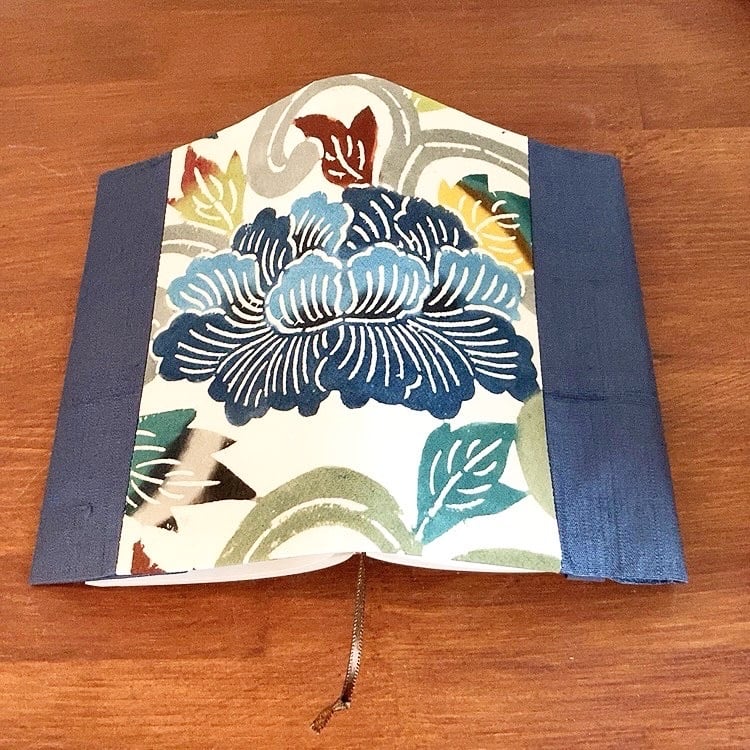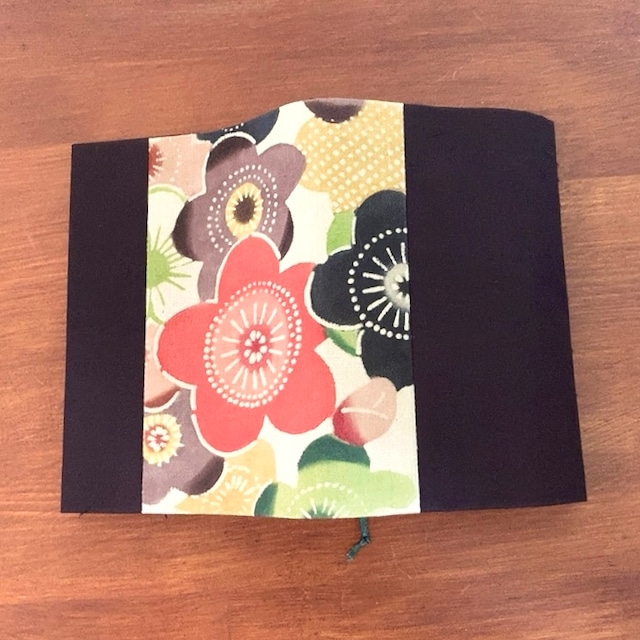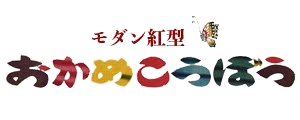5,000円以上のご購入で
送料無料
【モダン紅型】牡丹唐草/洋藍 (ブックカバー)







5,000円以上のご購入で
送料無料
【モダン紅型】牡丹唐草/洋藍 (ブックカバー)
【モダン紅型】牡丹唐草/洋藍 (ブックカバー)
¥6,600
SOLD OUT
牡丹唐草文のブックカバーです。
花の色は本藍と美藍、葉の色は弁柄、黄土、鼠色、中年向き緑などを使用し、
シックな色合いで染め上げました。
サイズ:約H16cm×W30.5㎝
染色生地:絹
--------------------------------------------------------
商品へのこだわり
■初めて「紅型」に出会った時の感動をいつまでも忘れずに
「紅型」に初めて出合った時、
今まで見たこともない模様、色合い、力強さに衝撃を受けました。
「紅型」は独特の色合いを持つ手染めの染色であり、沖縄の伝統工芸です。
ほとんど天然の材料を用いながらもビビットで美しい色合いが表現できる「紅型」。
化学染料が増えている昨今、あえて天然の顔料を用いることにこだわり、
「紅型」の伝統的な工程、技法を守りながら一つ一つ美しい染物を作り続けています。
■天然顔料
顔料の持つ色合いには、「華やかさ」「落ち着き」「柔らかさ」「渋さ」を感じられます。
時間の経過とともに色が枯れていき、落ち着いた色合いになります。
プリント商品には出すことのできない、色の移り変わりを楽しめるのも手染めの美しさならではです。
■柄に込められた意味
<牡丹文>
牡丹は中国の原産ですが、花が豪華なことから中国では「百花の王」とされ、富貴の象徴でした。日本には奈良時代には伝えられましたが、一般に人気の文様となったのは、花自体の栽培が進んだ江戸時代からで、襖絵や衝立、屏風、食器類に「文様の王」のごとく用いられました。牡丹文自体の種類も多く、きものでは意匠化された図案風な牡丹文からやがて絵画風、写生的な表現が好まれるようになり、現在に繋がっています。
<唐草文>
唐草は日本人に最もなじみのある文様ともいわれています。
蔓状の曲線をつないで作られる、または蔓草がからみ這う形を描いた唐草文は、
とても種類が多く、その歴史も長いです。名前の通り中国から伝わりましたが、起源は西アジアともいわれ、シルクロードを経て中国に伝わったものです。
日本で唐草文はどんどん進化し、桃山、江戸時代には蔓のない桐、松、菊、りんどうなど好みの植物をもとり込んで様々なバリエーションを創案し、陶磁器や染織などに愛好され、現在も古くて新しい文様のひとつです。
柄の意味を願い、家族や友人にプレゼントするのもおすすめです。
--------------------------------------------------------
◎おかめ工房のブックカバー◎
すべて裏打ち技術を活かした
製品となります。
生地の表裏は
表装用の絹(裂地)や
古裂れ(着物や帯)を使用しており、
こだわりの一品となっております。
【裏打ち(うらうち)とは】
掛け軸や額装において本紙(布または紙)の裏面に
紙などを貼り付ける日本の伝統技術のことです。
--------------------------------------------------------
◎商品特徴◎
表具(表装)の技術を活かし、
生地の裏に裏打ちをした
ブックカバーです。
裏打ちをすることによって、
布単体よりもハリが出て、
手によくなじみます。
文庫本のサイズに合わせて
片側を折りこむ仕様になっております。
お手持ちの本の厚みに合わせて 片側を折ってご使用下さい。
◎注意点◎
・水に付けたり水拭きされたりすると、裏打ちの紙が生地から剥がれる恐れがあります。
洗濯は出来ませんので、ご注意下さい。
・カバーは素材の特性上、一度折ると折り目がつきますのでご了承ください。
・摩擦・水濡れにより色落ちが起こる場合があります。
・直射日光を避けて保管してください。変色、退色の原因となります。
--------------------------------------------------------
※購入前に必ずご確認下さい※
・おかめ工房オリジナル商品です。
・手染めになりますので、一点ものになります。
・天然の顔料を使用しており、手染めのため、染めムラなどある場合がございますが、
手染めの特徴です。ご了承ください。また、時間とともに色が枯れていき、落ち着いた色合 いになります。
※商品の色は、可能な限り実物に近い色を出そうとしておりますが、携帯やパソコン、スマホのモニター環境により若干異なって見える場合がございます。
--------------------------------------------------------
紅型染め工程
1.型彫り:デザインを決め、型紙へ転写し、模様部分から彫っていきます。
2.紗張り:型紙を紗という生地で補強、固定する作業です。カシュー液またはペンキを使用します。
3.糊置き:型紙の上からペースト状の防染糊をヘラで薄く均一に伸ばし、生地に模様を写し取っていきます。
4.豆引き:染料が糊の裏側に染み出るのを防ぎ、染料の染め付けを良くし、定着させる作業です。
5.色差し(1度塗り):模様部分(糊がおかれていない部分)を染めていきます。染料・顔料を調整し刷毛で布に刷り込み配色します。顔料は豆汁で溶くと固着剤の役割を果たし、にじみ防止になります。
6.色差し(2度塗り):2回色を刷り込む事で色ムラを無くし、しっかり色を入れます。
7.隈取り:紅型の大きな特徴の一つです。色の上から隈取り用の刷毛で濃い色のぼかしを入れ陰影をつけます。ぼかし染めは図柄にアクセントをつけ立体感を出す効果があります。
8.明礬作業:完全に乾いた後、色落ち止めとして主に明礬を用います。
9.水元:約3日程色を定着させた後、水に浸します。糊が柔らかくなったら、布を斜めに引っ張り糊をはがすように落とします。
10.湯のし:蒸気を使ってシワをきれいに伸ばしていきます。反物幅を均等に揃えるための加工のことです。
11.仕立て:着物や帯、作品に仕立てて完成します。全行程手作業で行っており、全て1点ものとなります。
沢山の工程があり、ひとつひとつ手作業で染色しています。
紅型本来である「顔料」という染料を使い、昔から変わらない工程や技法で本格的な紅型作品を制作しております。
----------------------------------------------------------
Book cover with peony arabesque design.
The flowers are dyed in Hon-Ai and Mi-Ai, and the leaves in Bengara, Ochre, Rat, and Green for middle-aged people.
The color of the leaves is dyed in chic shades.
Size: approx. H16 cm x W30.5 cm
Dyed fabric: silk
---------------
The meaning behind the pattern
<Camellia pattern
A winter flower that blooms from December to March, it is said to be a good omen for the new year.
During the Edo period (1603-1867), camellias enjoyed a boom and became popular for appreciation and cultivation, as shown in the "One Hundred Camellias" series.
Camellia became popular as a design.
As a kimono pattern, it has a sense of season and also a sense of good fortune.
<Arabesque pattern
The arabesque is said to be the most familiar pattern to the Japanese.
The arabesque pattern is made by connecting curving vine-like lines or by depicting a form of creeping vines.
There are many varieties of arabesque patterns, and they have a long history. As the name suggests, arabesque patterns originated in China, but they are also said to have originated in Western Asia, where they were introduced to China via the Silk Road.
In Japan, arabesque patterns evolved rapidly, and during the Momoyama and Edo periods, various variations were created by incorporating favorite plants such as paulownia, pine, chrysanthemum, and lingzhi without vines, and they are still one of the oldest and newest patterns.
---------------
◎Okame Kobo book covers ◎
All of our book covers are made using our backing technique.
The front and back sides of the fabric are lined.
The front and back of the fabric is made of
silk (SAKIJI) and old
and old ripped fabrics (kimono and obi) are used for the front and the back.
This is one of our most careful products.
What is urauchi?
Urauchi is a traditional Japanese technique of attaching paper or other materials to the reverse side of the original paper (cloth or paper) for hanging scrolls and frames.
Urauchi is a traditional Japanese technique of attaching paper or other materials to the reverse side of a hanging scroll or frame.
---------------
Product Features
This product is made by utilizing the techniques of omotegumi (mounting).
This is a book cover that is lined with a fabric backing.
The book cover is lined with a fabric backing using the technique of omotegumi (mounting).
By backing the fabric, the book cover has more bounce than the fabric itself.
the back of the cloth is more resilient than the cloth itself, and
and it fits well in the hand.
One side is folded to fit the size of a paperback book.
Fold one side to fit the size of your paperback book.
Please fold one side to match the thickness of your book.
Cautions
Please note that the backing paper may come off from the fabric if it is soaked in water or wiped with a damp cloth.
Please note that it is not washable.
Please note that the cover will have a crease once folded due to the characteristics of the material.
The color may fade due to friction or wetting.
Please keep the product out of direct sunlight. It may cause discoloration or fading.
---------------
Please be sure to check before purchase.
This is an Okame Kobo original product.
This product is hand-dyed, so it is one-of-a-kind.
Because of the use of natural pigments and hand-dyeing, there may be uneven dyeing, but this is a characteristic of hand-dyeing.
This is a characteristic of hand-dyeing. Please understand that this is a characteristic of hand-dyeing. The color will fade over time and become more subdued.
We try to make the colors of our products as close to the real thing as possible, but they may look slightly different depending on the monitor environment of your cell phone, PC, or smartphone.
---------------
Bingata Dyeing Process
1. Katabori: Decide on a design, transfer it to a stencil, and carve it starting from the patterned part.
2.Gauze stretching: The katagami is reinforced and fixed with a fabric called gauze. Cashew solution or paint is used.
3.Glueing: A paste of antistaining glue is spread thinly and evenly over the pattern with a spatula, and the pattern is copied onto the fabric.
4.Mamegaki: This process prevents the dye from seeping through to the underside of the paste, and helps the dye to adhere and fix in place.
5.Color-application (one coat): Dyeing the patterned area (the area not covered with glue). Dye and pigment are adjusted and brushed onto the cloth with a brush to distribute the colors. Dissolving the pigments in soybean juice acts as an adhesive and prevents blotting.
6.Color is applied twice to the cloth to eliminate unevenness in color and to ensure that the color is applied firmly.
7.Kuma-ori (shading): This is one of the main characteristics of Bingata. A kumakiri brush is used to add shades of darker colors on top of the colors. Bokashi-dyeing has the effect of accentuating the design and giving it a three-dimensional effect.
8.Alumite: After the color has completely dried, alumite is mainly used to prevent the color from fading.
9.After allowing the colors to set for about three days, the cloth is dipped in water. When the glue softens, pull the cloth diagonally and peel off the glue.
10. Yunoshi: The wrinkles are neatly stretched out using steam. This process is used to make the width of the fabric even.
11.Tailoring: The kimono, obi, or work of art is made into a finished product. The entire process is done by hand, and each piece is unique.
There are many processes and each piece is dyed by hand.
We produce authentic Bingata works using dyes called "pigments," which are the original Bingata, and using processes and techniques that have remained unchanged since ancient times.
花の色は本藍と美藍、葉の色は弁柄、黄土、鼠色、中年向き緑などを使用し、
シックな色合いで染め上げました。
サイズ:約H16cm×W30.5㎝
染色生地:絹
--------------------------------------------------------
商品へのこだわり
■初めて「紅型」に出会った時の感動をいつまでも忘れずに
「紅型」に初めて出合った時、
今まで見たこともない模様、色合い、力強さに衝撃を受けました。
「紅型」は独特の色合いを持つ手染めの染色であり、沖縄の伝統工芸です。
ほとんど天然の材料を用いながらもビビットで美しい色合いが表現できる「紅型」。
化学染料が増えている昨今、あえて天然の顔料を用いることにこだわり、
「紅型」の伝統的な工程、技法を守りながら一つ一つ美しい染物を作り続けています。
■天然顔料
顔料の持つ色合いには、「華やかさ」「落ち着き」「柔らかさ」「渋さ」を感じられます。
時間の経過とともに色が枯れていき、落ち着いた色合いになります。
プリント商品には出すことのできない、色の移り変わりを楽しめるのも手染めの美しさならではです。
■柄に込められた意味
<牡丹文>
牡丹は中国の原産ですが、花が豪華なことから中国では「百花の王」とされ、富貴の象徴でした。日本には奈良時代には伝えられましたが、一般に人気の文様となったのは、花自体の栽培が進んだ江戸時代からで、襖絵や衝立、屏風、食器類に「文様の王」のごとく用いられました。牡丹文自体の種類も多く、きものでは意匠化された図案風な牡丹文からやがて絵画風、写生的な表現が好まれるようになり、現在に繋がっています。
<唐草文>
唐草は日本人に最もなじみのある文様ともいわれています。
蔓状の曲線をつないで作られる、または蔓草がからみ這う形を描いた唐草文は、
とても種類が多く、その歴史も長いです。名前の通り中国から伝わりましたが、起源は西アジアともいわれ、シルクロードを経て中国に伝わったものです。
日本で唐草文はどんどん進化し、桃山、江戸時代には蔓のない桐、松、菊、りんどうなど好みの植物をもとり込んで様々なバリエーションを創案し、陶磁器や染織などに愛好され、現在も古くて新しい文様のひとつです。
柄の意味を願い、家族や友人にプレゼントするのもおすすめです。
--------------------------------------------------------
◎おかめ工房のブックカバー◎
すべて裏打ち技術を活かした
製品となります。
生地の表裏は
表装用の絹(裂地)や
古裂れ(着物や帯)を使用しており、
こだわりの一品となっております。
【裏打ち(うらうち)とは】
掛け軸や額装において本紙(布または紙)の裏面に
紙などを貼り付ける日本の伝統技術のことです。
--------------------------------------------------------
◎商品特徴◎
表具(表装)の技術を活かし、
生地の裏に裏打ちをした
ブックカバーです。
裏打ちをすることによって、
布単体よりもハリが出て、
手によくなじみます。
文庫本のサイズに合わせて
片側を折りこむ仕様になっております。
お手持ちの本の厚みに合わせて 片側を折ってご使用下さい。
◎注意点◎
・水に付けたり水拭きされたりすると、裏打ちの紙が生地から剥がれる恐れがあります。
洗濯は出来ませんので、ご注意下さい。
・カバーは素材の特性上、一度折ると折り目がつきますのでご了承ください。
・摩擦・水濡れにより色落ちが起こる場合があります。
・直射日光を避けて保管してください。変色、退色の原因となります。
--------------------------------------------------------
※購入前に必ずご確認下さい※
・おかめ工房オリジナル商品です。
・手染めになりますので、一点ものになります。
・天然の顔料を使用しており、手染めのため、染めムラなどある場合がございますが、
手染めの特徴です。ご了承ください。また、時間とともに色が枯れていき、落ち着いた色合 いになります。
※商品の色は、可能な限り実物に近い色を出そうとしておりますが、携帯やパソコン、スマホのモニター環境により若干異なって見える場合がございます。
--------------------------------------------------------
紅型染め工程
1.型彫り:デザインを決め、型紙へ転写し、模様部分から彫っていきます。
2.紗張り:型紙を紗という生地で補強、固定する作業です。カシュー液またはペンキを使用します。
3.糊置き:型紙の上からペースト状の防染糊をヘラで薄く均一に伸ばし、生地に模様を写し取っていきます。
4.豆引き:染料が糊の裏側に染み出るのを防ぎ、染料の染め付けを良くし、定着させる作業です。
5.色差し(1度塗り):模様部分(糊がおかれていない部分)を染めていきます。染料・顔料を調整し刷毛で布に刷り込み配色します。顔料は豆汁で溶くと固着剤の役割を果たし、にじみ防止になります。
6.色差し(2度塗り):2回色を刷り込む事で色ムラを無くし、しっかり色を入れます。
7.隈取り:紅型の大きな特徴の一つです。色の上から隈取り用の刷毛で濃い色のぼかしを入れ陰影をつけます。ぼかし染めは図柄にアクセントをつけ立体感を出す効果があります。
8.明礬作業:完全に乾いた後、色落ち止めとして主に明礬を用います。
9.水元:約3日程色を定着させた後、水に浸します。糊が柔らかくなったら、布を斜めに引っ張り糊をはがすように落とします。
10.湯のし:蒸気を使ってシワをきれいに伸ばしていきます。反物幅を均等に揃えるための加工のことです。
11.仕立て:着物や帯、作品に仕立てて完成します。全行程手作業で行っており、全て1点ものとなります。
沢山の工程があり、ひとつひとつ手作業で染色しています。
紅型本来である「顔料」という染料を使い、昔から変わらない工程や技法で本格的な紅型作品を制作しております。
----------------------------------------------------------
Book cover with peony arabesque design.
The flowers are dyed in Hon-Ai and Mi-Ai, and the leaves in Bengara, Ochre, Rat, and Green for middle-aged people.
The color of the leaves is dyed in chic shades.
Size: approx. H16 cm x W30.5 cm
Dyed fabric: silk
---------------
The meaning behind the pattern
<Camellia pattern
A winter flower that blooms from December to March, it is said to be a good omen for the new year.
During the Edo period (1603-1867), camellias enjoyed a boom and became popular for appreciation and cultivation, as shown in the "One Hundred Camellias" series.
Camellia became popular as a design.
As a kimono pattern, it has a sense of season and also a sense of good fortune.
<Arabesque pattern
The arabesque is said to be the most familiar pattern to the Japanese.
The arabesque pattern is made by connecting curving vine-like lines or by depicting a form of creeping vines.
There are many varieties of arabesque patterns, and they have a long history. As the name suggests, arabesque patterns originated in China, but they are also said to have originated in Western Asia, where they were introduced to China via the Silk Road.
In Japan, arabesque patterns evolved rapidly, and during the Momoyama and Edo periods, various variations were created by incorporating favorite plants such as paulownia, pine, chrysanthemum, and lingzhi without vines, and they are still one of the oldest and newest patterns.
---------------
◎Okame Kobo book covers ◎
All of our book covers are made using our backing technique.
The front and back sides of the fabric are lined.
The front and back of the fabric is made of
silk (SAKIJI) and old
and old ripped fabrics (kimono and obi) are used for the front and the back.
This is one of our most careful products.
What is urauchi?
Urauchi is a traditional Japanese technique of attaching paper or other materials to the reverse side of the original paper (cloth or paper) for hanging scrolls and frames.
Urauchi is a traditional Japanese technique of attaching paper or other materials to the reverse side of a hanging scroll or frame.
---------------
Product Features
This product is made by utilizing the techniques of omotegumi (mounting).
This is a book cover that is lined with a fabric backing.
The book cover is lined with a fabric backing using the technique of omotegumi (mounting).
By backing the fabric, the book cover has more bounce than the fabric itself.
the back of the cloth is more resilient than the cloth itself, and
and it fits well in the hand.
One side is folded to fit the size of a paperback book.
Fold one side to fit the size of your paperback book.
Please fold one side to match the thickness of your book.
Cautions
Please note that the backing paper may come off from the fabric if it is soaked in water or wiped with a damp cloth.
Please note that it is not washable.
Please note that the cover will have a crease once folded due to the characteristics of the material.
The color may fade due to friction or wetting.
Please keep the product out of direct sunlight. It may cause discoloration or fading.
---------------
Please be sure to check before purchase.
This is an Okame Kobo original product.
This product is hand-dyed, so it is one-of-a-kind.
Because of the use of natural pigments and hand-dyeing, there may be uneven dyeing, but this is a characteristic of hand-dyeing.
This is a characteristic of hand-dyeing. Please understand that this is a characteristic of hand-dyeing. The color will fade over time and become more subdued.
We try to make the colors of our products as close to the real thing as possible, but they may look slightly different depending on the monitor environment of your cell phone, PC, or smartphone.
---------------
Bingata Dyeing Process
1. Katabori: Decide on a design, transfer it to a stencil, and carve it starting from the patterned part.
2.Gauze stretching: The katagami is reinforced and fixed with a fabric called gauze. Cashew solution or paint is used.
3.Glueing: A paste of antistaining glue is spread thinly and evenly over the pattern with a spatula, and the pattern is copied onto the fabric.
4.Mamegaki: This process prevents the dye from seeping through to the underside of the paste, and helps the dye to adhere and fix in place.
5.Color-application (one coat): Dyeing the patterned area (the area not covered with glue). Dye and pigment are adjusted and brushed onto the cloth with a brush to distribute the colors. Dissolving the pigments in soybean juice acts as an adhesive and prevents blotting.
6.Color is applied twice to the cloth to eliminate unevenness in color and to ensure that the color is applied firmly.
7.Kuma-ori (shading): This is one of the main characteristics of Bingata. A kumakiri brush is used to add shades of darker colors on top of the colors. Bokashi-dyeing has the effect of accentuating the design and giving it a three-dimensional effect.
8.Alumite: After the color has completely dried, alumite is mainly used to prevent the color from fading.
9.After allowing the colors to set for about three days, the cloth is dipped in water. When the glue softens, pull the cloth diagonally and peel off the glue.
10. Yunoshi: The wrinkles are neatly stretched out using steam. This process is used to make the width of the fabric even.
11.Tailoring: The kimono, obi, or work of art is made into a finished product. The entire process is done by hand, and each piece is unique.
There are many processes and each piece is dyed by hand.
We produce authentic Bingata works using dyes called "pigments," which are the original Bingata, and using processes and techniques that have remained unchanged since ancient times.










